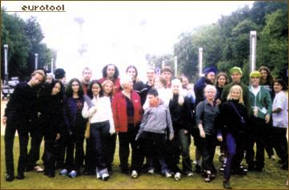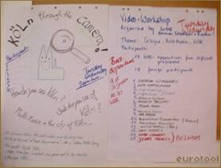Apply/Requirements
| Line 174: | Line 174: | ||
Joint Actions are a new possibility. Every year there are calls for proposals published in the Official Journal of the European Communities. There they indicate the themes, objectives and context, types of project, support and budget available, eligibility and selection criteria, financial conditions, as well as the application procedure and deadlines. | Joint Actions are a new possibility. Every year there are calls for proposals published in the Official Journal of the European Communities. There they indicate the themes, objectives and context, types of project, support and budget available, eligibility and selection criteria, financial conditions, as well as the application procedure and deadlines. | ||
| − | ==Action 5 'Support Measures'== [[File:Plans.jpg|frame|right]] | + | ==Action 5 'Support Measures'== |
| − | + | [[File:Plans.jpg|frame|right]] | |
'''Participants''' | '''Participants''' | ||
Revision as of 11:41, 17 March 2011
Before starting to fill in your application, remember to make sure you meet the required conditions to join that program, since some facts may change from one Action to another. The following is a schematic outline of the information found in the Users' Guide, so that it is easier to quickly check if you come up to the requirements or not.
For more detailed information, check the Youth in Action Programme Guideother languages of the Program YOUTH.
If you just need a Sending Organization, try searching the list of organizations.
Contents |
General
- The Program Youth has five Actions. Each one has a different aim and different "rules".
- The European Commission sets priorities every year to guide the approval of projects. After, every country sets additional national priorities that respect the main ones.
- Application deadlines are established for specific periods of time (for example, if a project will take place between the 1st of May and the 30th of September, you must apply before the 1st of February).
- You can join or create a project:
- as an individual (“participant” or “volunteer”’),
- as an organizer of a project (“hosting organization”),
- as an organization that joins a project (“sending organization”),
- by sending individuals to a project from your organization and being their responsible in their home country (“sending organization”).
If you want to join a project as an individual:
- You need to apply for an existing project to the responsible organization. You will find different kind of projects, in many countries, about many subjects and for different periods of time. Find the ones that interest you.
- If you already know what project you would like to join, contact the responsible organization (“hosting”) and apply.
- You will need also a sending organization; search for one in your town.
If your organization wants to join a project (sending):
- To join a project you have to receive an invitation from the responsible organization.
- If you don’t have an invitation, you can also try to contact an organization that is preparing a project before they apply.
If your organization wants to apply for a project (hosting):
- If you want to apply for a project, you have to completely design it first. The project must follow the rules of the Action you choose. Rules affect general aims, kind of activities, people involved, financing, etc.
|
Who Young people • Between 13 and 30,
|
What countries Program Countries:
Other countries (“third countries”): they can participate to a limited extend and under certain conditions in Actions 1, 2 and 5. The European Commission may also support projects of a pilot character or with high promotional value involving these countries.
More about participation of Third Countries in the Youth in Action Programme Guideother languages.
|
Action 1 'Youth for Europe'
- Short-term program,
- Exchange of groups from different countries,
- Young people between 15 and 25.
Action 2 'European Voluntary Service'
Participants
- For individuals
- Aged between 18 and 25 when they start the program (or over 25 for young people with less opportunities, if justified, and judged on a case-by-case basis).
- Legally residents in a Program Country or in an eligible Third country (more about participation of Third Countries in EVS here).
- Organizations cannot specify that volunteers should be of a specific ethnic group, religion, sexual orientation or political opinion.
Duration
- For a period between 6 and 12 months.
- For a period between 3 weeks and 6 months for short-term projects (for people with less opportunities).
Location
- A country other than where the volunteer lives.
- At least one EU Member State.
Voluntary Service
- Non-profit-making and unpaid (apart from the money received with the program).
- Must not involve job substitution, be a substitute for military service or alternative service formulas.
- It must show clear learning opportunities for the volunteer.
- The voluntary activity (training included) should take up between 30 and 35 hours per week.
Priorities
- Young people with less opportunities (More information about EVS with special needs here).
- Create new partnerships. Involve organizations which have not yet participated in EVS.
- Involve a new area of activity, or have innovative features.
- Support the development of local communities.
Sending Organization
Any type of non-governmental organization, an association, a local authority or any other non-profit-making local initiative can be a sending organization.
Hosting organization
All host organizations must be approved by the European Commission. The first step is to submit the Host Expression of Interest to the National Agency (valid for a maximum of three years, not just for a project).
Contractual obligations
The tasks of the volunteer, the hosting and sending organization plus money are specified in the Youth in Action Programme Guideother languages.
Action 3 'Youth Initiatives'
Group Initiatives and Networking projects
Participants- Groups of young people (at least four).
- Legally residents in one of the Program Countries.
- Aged between 15 and 25 (in principle).
- A group should consist of at least four individuals.
Location
- Any of the Program Countries.
Duration
Between three months and one year. Note: A Group Initiative may include mobility activities at local, regional or national level and relevant travel costs may be funded.
Action 4 'Joint Actions'
Joint Actions are a new possibility. Every year there are calls for proposals published in the Official Journal of the European Communities. There they indicate the themes, objectives and context, types of project, support and budget available, eligibility and selection criteria, financial conditions, as well as the application procedure and deadlines.
Action 5 'Support Measures'
Participants
- Youth workers,
- trainers,
- support persons,
- mentors,
- project managers,
- youth leaders,
- groups of young people,
- other actors involved or interested in non-formal education,
- non-profit organizations and public authorities experienced in the field of youth and non-formal education.
- All activities must involve at least one EU Member State.
Location
Any of the countries involved in the project.



